
Djibouti’s Only Travel Guide You Need For A Great Trip in 11 Easy Steps
- Destinations Africa
Cruisit Team
- August 4, 2022
- 0
- 4850
- 64 minutes read
Djibouti’s Background
In 3 BC, Arabian settlers from Yemen arrived in the nation, and from them descended the Afars, who are today’s Djiboutians. Following then, the Somali Issas appeared. Islam was brought to the country after more than 800 years later, and it became the first African country adopting the religion. The mixture of Somali, Afars, and Nomads from Yemen continued to live in and around Djibouti for years before European explorers started their invasion.
French forces landed in the area in 1843 and negotiated a deal with the Somali sultans, making the land their dominion. Because of its strategic location – the capital city’s port serves as a port open to other ships crossing the Red Sea – the French became interested in seizing the area. Obock was the country’s administrative capital at the time. France expanded its jurisdiction to Somaliland and the Gulf of Tadjourah in 1884, as shown by an agreement with Ethiopia. After a few years, the capital city was transferred from Obock to Djibouti, which had direct access to the Ethiopian highlands. Its natural harbor also drew traders from East Africa, opening the nation up to more visitors.
Then known as French Somaliland, it became an overseas territory of the French, granting them representation in the French Parliament and the French Union Assembly. However, during French President Charles de Gaulle’s visit to the nation in August 1966, major public rallies for independence were held. Governor General Louis Saget decided to organize a referendum to determine if the people wanted to stay under French sovereignty or gain independence. The next year, about 60% decided to remain under French authority. Its name was changed to the French Territory of Afars and Issas later that year.
The French government ultimately considered granting the nation independence due to persistent public demand. The French territory of the Afars and Issas was renamed Djibouti in 1977, and Hassan Gouled Aptidon was elected as the first President.
Djibouti, a small country in the Horn of Africa, situated between Ethiopia, Somalia, and Eritrea. Much of the country is still undeveloped, making it an ideal location for eco-tourists wishing to escape off the beaten path. The interior features a kaleidoscope of dramatic landscapes ranging from plummeting gorges to salt-encrusted lakes, while the shore provides great scuba diving and the opportunity to dive with the world’s biggest fish. Djibouti City, the country’s capital, is a burgeoning urban playground with one of the region’s best culinary scenes.
One of Africa’s smallest countries, Djibouti is around 23,000 km, located in East Africa. It is somewhat smaller than Egypt’s Sinai, or the American state of New Jersey in comparison. The borders with Eritrea to the north, Ethiopia to the west, and Somalia to the south gives it a squeezed look. Djibouti also shares a shoreline with the Red Sea and the Gulf of Aden.
Djibouti City, founded in 1888 as the capital of the French Somaliland territory, has evolved into a bustling metropolitan hub throughout the years. Its diverse restaurant and bar culture reflects its status as the second wealthiest city in the Horn of Africa, although the country is still mostly poor, with more than 40% of the population in extreme poverty. The nation is very sophisticated, with traditional Somali and Afar culture combined with influences from its sizable foreign residents.
Djibouti’s landscape is diverse and rugged, ranging from rocky mountains in the north to a succession of flat desert plains. Mount Moussa, soaring at 2,028 meters, is Djibouti’s highest point. The salty Lake Assal, is the country’s lowest point, but also the lowest in Africa, a 155 meters below sea level area. The country is known across the world as a geologic treasure trove. The nation has substantial seismic and geothermal activity due to its location at a triple junction of the Red Sea, Gulf of Aden, and East African rift systems.
“Small but mighty, Djibouti is a powerhouse of diversity. With beauty in its spectacular terrains, seas full of life, and rich cultural backgrounds. Despite its internal challenges, a strategic spot on the map gives it the keys of maritime trade, although the whole world eyes for it.“
This sliver of a country carries a powerful impact. Its beauty more than compensates for its lack of size. With the probable exception of Iceland, few places in the world have such bizarre landscapes – imagine salt lakes, extinct volcanoes, submerged plains, limestone chimneys emitting gusts of steam, basaltic plateaus, and breathtaking canyons. Hiking, diving, and whale-shark spotting are among the land and marine activities available in the Gulf of Tadjoura.
Despite Djibouti’s somewhat difficult terrain, there is a plethora of vegetation and animals. The ancient Day Forest National Park and a variety of tree species, including jujube, fig, olive, juniper, and momosa, may be found in the northern part of the nation. The vegetation to the south and southwest of the Gulf of Tadjoura is comparable to that seen in other desert parts of Africa, including acacia and doum palm trees. Except for Djibouti City, the country is devoid of large-scale development. It’s all about ecotourism, with some eco-friendly hotels in the countryside.
There are numerous bird species, various kinds of antelopes and gazelles, and fewer predators (such as cheetahs) and scavengers (such as hyenas), as well as monkeys, squirrels, and warthogs. The extraordinarily rich diversity of marine life found along Djibouti’s coastline and coral reefs is perhaps most remarkable, making the country a unique center of attraction for activities under the water.
Traveling across Djibouti on your own may not be affordable, but despite the high cost of staying there, you’ll undoubtedly leave this tiny corner of Africa with fresh adventures and lovely memories.
To get the most out of Djibouti, you should keep moving so that you may see and do as much as possible of what Djibouti has to offer tourists. In our Cruisit Djibouti travel guide, we provide a strategy that is roughly midway between leisure and exploration. Enter the land and immerse yourself in this perfect spot in Africa. The Djibouti travel plan provided below is best enjoyed during the nation’s high season in the summer, but you may still enjoy the country during the shoulder season. With its white-washed structures, sunny days near hills, under the shade of a tree, and surrounded by a stunning multitude of landscapes, your African journey will be exciting.
Also, in our travel guide to Djibouti, we will give you all the information you will need to steer through the country at ease. Djibouti’s highlights, tips, transportation, top places and attractions, a handcrafted itinerary in Djibouti, and more will be provided for you as you read through. If you are excited enough by now, let us dig right in!
- Visit Mosque Hamoudi
- Stroll around Mahamoud Harbi square
- Camp at Lac Abbe
- Explore Foret du Day National Park
- Witness the Magnificent crater lake of Lac Assal and stay floating.
- Escape the mainly arid country to Goda Mountains
- Relax on the wonderful beaches of the Moucha and Maskali Islands; in the winter, Whale Sharks enter the seas and are a big attraction.
- Ghoubet Al-Kharab, or “devil’s island,” is a fascinating site in the Tadjourah Gulf.
- Cushitic (Somali) is the native language of Djibouti, but people also speak Afar, while French and Arabic are the official languages.
- Djiboutians are hospitable and courteous, and their society is one of the most peaceful, despite the fact that it is home to three ethnic groups. There, Somalis, Afars, and Arabs dwell harmoniously.
- In Djibouti, Islam is the most frequently practiced religion.
- Djibouti is usually always hot, with winter temperatures of 20 degrees Celsius and summer temperatures of 40 degrees Celsius.
- Fish enthusiasts will be in ecstasy in Djibouti, especially during the winter months when whale sharks adorn its shores.
- Because of the well-preserved natural environments, wildlife is abundant in this nation.
- Almost all citizens require a visa to visit the country, however some can obtain one upon arrival. So, if your passport demands it, make sure you have it ready ahead of time.
- All international flights arrive at Djibouti’s Ambouli International Airport. The primary airlines are Ethiopian, Turkish, and Kenyan.
- You may enter Djibouti by train from Ethiopia.
- Before beginning on the voyage, you will need to have Hepatitis A, Typhoid, and Yellow Fever vaccines. You will also require anti-malaria medicine.
- Gratuity is allowed and preferred for service providers.
Crime & Scams in Djibouti
In general, crime rates in Djibouti are low, and not only in relation to some of its neighbors (think Somalia and Eritrea). That is not to mean that the nation is without crime, so use common sense and be especially attentive for pickpockets and stealing in general.
Be vigilant, particularly if you are in cramped public places, near official buildings, crowded attractions, or on public transportation. Avoid poor areas of the city. Take care on city streets, especially after dark or if you are on your own. Don’t carry large amounts of money or wear valuable watches or jewelry. Avoid using your mobile phone in the street. Also, please don’t brag and show off in Djibouti. It’s a simple place, so be humble.
Healthcare in Djibouti While Traveling
Djibouti suffers from a significant shortage of health-care facilities. Even though the country’s capital has the largest concentration of medical institutions, there are still extremely few. Furthermore, the facilities can only handle a limited number of emergency surgeries. Djibouti’s public health care is supplied by 7 hospitals and over 40 additional institutions, however it is inadequate. The situation is even worse outside of Djibouti’s capital. Many isolated areas lack simple access to health-care services. The country’s minimal health facilities are only available for medical emergencies. When serious medical treatment is required, Djibouti’s health care personnel frequently advise tourists to leave the country.
Before every trip, make sure you are up to date on all routine vaccinations. Among the key recommended vaccines globally are chickenpox (Varicella), diphtheria-tetanus-pertussis (DTP), influenza (flu), measles-mumps-rubella (MMR), polio, hepatitis, typhoid, and shingles. If you will be in contact with wildlife, you may want to consider getting a rabies vaccination.
When visiting Djibouti, you are not legally required to purchase travel medical insurance. However, it is always important to have comprehensive medical coverage when traveling because you never know what you could encounter while overseas, especially in a country with basic healthcare, especially if you will need medical evacutation.
Only eat foods that are cooked and served hot, avoid food that has been sitting on a buffet, and eat raw fruits and vegetables only if you have washed them in clean water or peeled them.
Only drink beverages from factory-sealed containers, avoid ice because it may have been made from unclean water, and only drink pasteurized milk.
Always wash your hands with soap and water for 20 seconds, especially after using the bathroom and before eating. If soap and water aren’t available, use an alcohol-based hand sanitizer that contains at least 60% alcohol. Also, keep your hands away from your face and mouth.
Djibouti has an arid tropical semi-desert climate, with long, hot summers and lengthy, cold, wet winters. Throughout the year, the temperature normally ranges from 23°C to 41°C, and rarely falls below 22°C or rising over 43°C. The hot season lasts from late May to early September, with daily high temperatures averaging more than 39°C and the cold season from October to mid-March with temperatures around 23°C.
The best time to visit Djibouti is determined by your preferences and interests. While you can visit Djibouti all year, it’s a good idea to know what to anticipate in each season before planning your trip.
Summer in Djibouti is not the best time to visit for road trips and outdoor activities, since it is the hottest period, with temperatures reaching 40+ degrees Celsius. If you want to better weather, the winter season is the best time to go to Djibouti. Winter is the best for all activities because because the temperatures are lower. So when to go to Djibouti depends on your Djibouti travel itinerary.
Shoulder Season
One of the most affordable times to travel to Djibouti is in the shoulder season which stretches from mid-March to April.
High (Peak) Season
The best time to visit Djibouti is in the peak season which coincides in the winter. Djibouti’s winter lasts around 5 months from October to February is the greatest time because the country starts seeing better weather, with plenty of sunshine, but not oven hot like summer, and less rain. Temperatures range from 24 to 32 degrees celsius throughout this period. The weather is bearable in the morning and good at night. All activities in this period make more sense in the cooler weather. Whale sharks in Djibouti are around in winter which makes it a great time for people wanting to see the gentle giants. Even though Djibouti does not get too many visitors, but its likely
Off-Season (Low Season)
Djibouti’s summer normally lasts from May to September, and it may get brutally hot during these months, with average temperatures reaching up to 43°C (107°F). Early to mid-September is generally the most affordable time to visit Djibouti, although the country doesn’t normally get much traffic.
By Plane
Flying to Djibouti is by far the easiest and quickest method to visit the nation. Daallo Airlines of Djibouti flies to a few locations, including Dubai, Jeddah, and Nairobi. Djibouti Ambouli International Airport will be your point of entry into the country. Ambouli Airport is Djibouti’s main airport. There are 10 airports worldwide with direct flights to Djibouti, distributed over 10 locations in 8 countries. AirAsia, Jubba Airways, Ethiopian Airlines, Turkish Airlines, Qatar Airways, Air France, Flydubai, and Yemenia are the airlines that service the nation.
By Train
There is a train service that runs twice a week between Dire Daba, Ethiopia, and Djibouti.
By Car
You may cross the border from Eritrea, Ethiopia, or Somalia, but the journey takes anywhere from 20 to more than 30 hours depending on where you start. Also the connecting roads can be in terrible conditions and safety concerns can arise along the borders due to terrorism. Drive at your own risk.
By Car
Driving at night on all roads outside of Djibouti City is highly unsafe and strongly advised. While some major roads in Djibouti are in good condition, others are small, poorly lighted, or rutted. Many minor roads are in bad shape. Drivers and pedestrians alike should proceed with utmost caution. If you don’t mind driving alongside khat-high drivers, renting a car is a smart choice. The roads are in good shape, particularly in the central city and connecting settlements. Car rental allows you to go at your own leisure, but it is pricey, as is everything in Djibouti.
Your Djiboutian driving license will not enable you to drive in this country. In addition to your native driving license, you must have the International Driver’s License when visiting Djibouti. Both your local license and your IDP should be kept on you at all times.
By Taxi
In Djibouti, a cab will be your closest friend and ally. Green TaxiCabs are common in major cities, including Djibouti City, Dikhile, Ali-Sabieh, Arta, and Doralé. They are mostly utilized for airport to downtown transit as well as sightseeing. Keep an eye out for khat-chewing drivers. While it is not a narcotic, it is a stimulant that produces excessive energy, and you may want to think again before embarking on your life’s most thrilling journey. Taxi charges vary according on distance traveled, and prices rise by at least 50% after dark. Outside the airport, there is a huge billboard with typical pricing to assist you determine right fares and avoid being ripped off.
Before getting into a cab, always negotiate the price. Djiboutian taxi drivers may be stingy, and if you don’t know the local rates, you may be discarded. If you are staying for an extended amount of time, you might ask for reliable taxi drivers in the area and reach an arrangement. You must agree on a pricing and the number of pickups every day.
By Bus
The railway service in Djibouti was once the primary means of transit to and from Ethiopia, but it has since been discontinued, leaving the nation without a dependable rail infrastructure. The best way to travel between towns and cities is to use regular buses or the capital’s municipal minibus system, which has a fixed fee.
By Boat
There are daily ferry services to and from Obock, Tadjoura, and Djibouti City. The journey can last up to three hours, however boat transfers from Djibouti Port to the adjacent Moucha Islands take only 30 to 45 minutes. International ferries to Yemen and major East African ports are also available.
With no established timetable, a bus will occasionally stop at major crossroads in major regions such as Heron to pick up passengers. You may get on and go a reasonable distance for as cheap as 40 DJF (US$0.25). It can be difficult at times because the majority of drivers’ helpers who shout out for passengers do not know French or English. Always state the name of the establishment out loud, and the individual will either let you in or not; it’s a type of code. The rates should rise as you travel further. These minibuses travel across Djibouti, connecting central and suburban locations.
SIM Cards & Calls in Djibouti
In Djibouti Telecom shops, an Evatis by Djibouti Telecom SIM card costs 1000 DJF (5.60 USD). Because Djibouti Telecom maintains a monopoly, Evatis SIM cards are your only option in the nation. 12 GB valid for 7 days will likewise set you back 1000 DJF, which is a decent price. The telecom business offers and provides 2G, 3G, and 4G networks. You must go through a SIM card registration procedure, therefore bring your passport with you.
Alternatively, you may also get a prepaid eSim card from a company like Airalo, SIMCorner, HolaFly, or Nomad. All the providers offer data-only plans that may be used with an eSim-enabled phone, so make sure your phone is compatible. It is also possible to sign up for a Solis WiFi Hotspot. Check before you travel because they only serve select areas. Airalo provides the most extensive coverage of over 180 nations.
Local Internet & WiFi in the Djibouti
Djibouti is falling behind in terms of broadband Internet connection expansion. Approximately 59 percent of the inhabitants have Internet connection. The average speed is approximately 5Mbps, which isn’t bad but still too sluggish for intensive work. Most hotels and other lodging choices in the nation will most likely have internet access, and there is WiFi in the Djibouti Airport as well.
Top Places in Djibouti
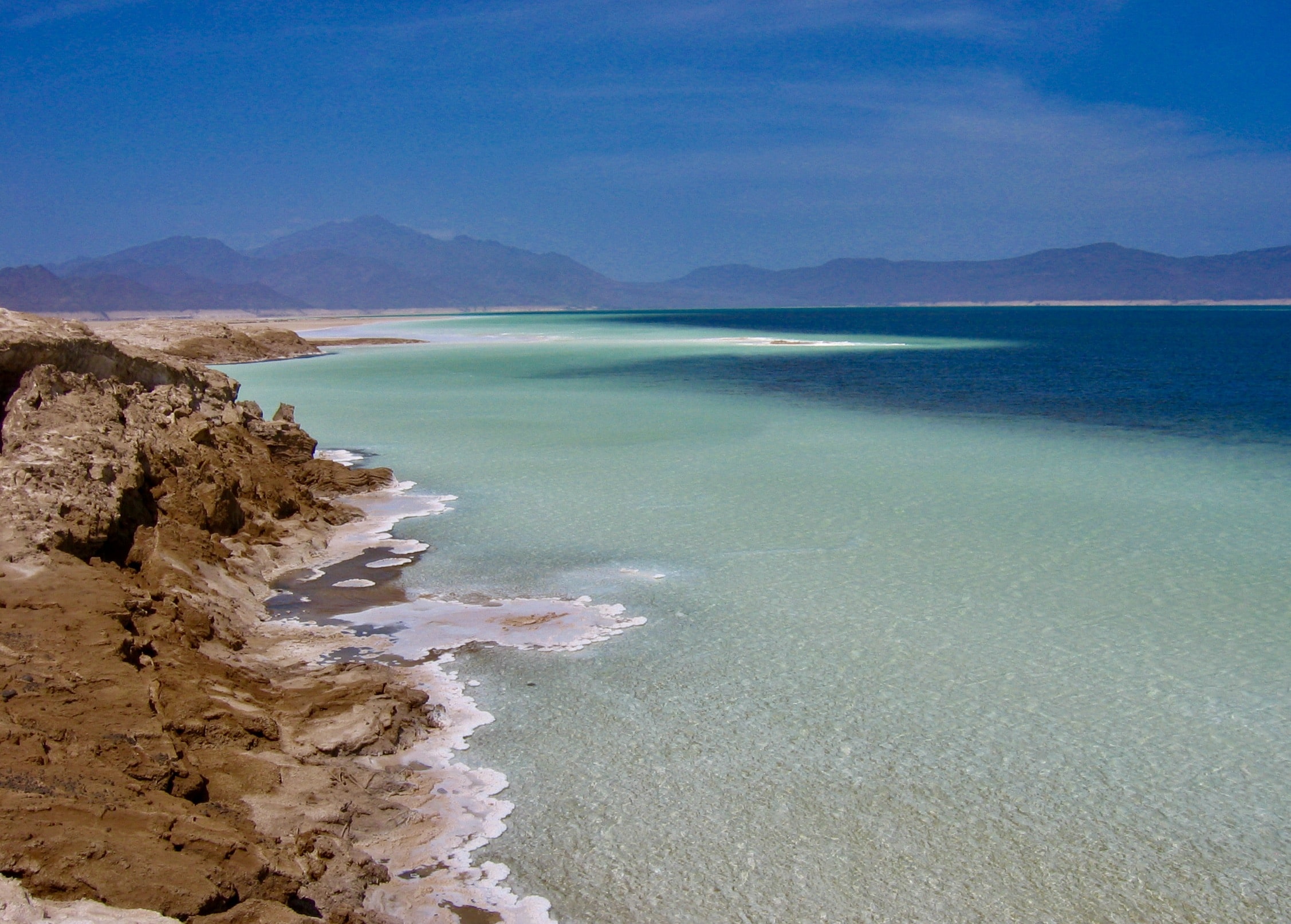
Lake Assal
This spectacular crater lake, also known as Lac Assal, is located 70 miles/115 kilometers west of the city. It is Africa’s lowest point, at 508 feet/155 meters below sea level. It’s also an area of remarkable natural beauty, with turquoise seas that contrast with the white salt that’s piled up along the beach. You may see Djiboutis with their camels gathering salt here, as they have for hundreds of years.
Day Forest National Park
Day Forest National Park, also known as Forêt du Day National Park, is a Djiboutian national park located in the Goda Mountains and Tadjourah Region. The only really hilly location of Djibouti, and likely the only relief from the intense desert heat, is roughly a three-hour drive from the city center.


Goda Mountains
The Goda Mountains in the northwest provide an alternative to the country’s parched regions. On the shoulders of mountains that reach up to 5,740 feet/1,750 meters in height, flora grows thick and luxuriant. Rural Afar settlements provide an insight into Djibouti’s traditional culture, while the Day Forest National Park is ideal for birding and wildlife aficionados.
European Quarter
Place du 27 Juin 1977 (Place Ménélik) is the focal point of the European Quarter. This large plaza, with its whitewashed homes and Moorish arches, is an odd blend of Arab and European. It is surrounded by cafés, bars, restaurants, and shopping. The Blvd de la République connects the European Quarter to the Plateau du Serpent region to the north, where many of the major governmental buildings may be located.


Moucha & Maskali Islands
The islands of Moucha and Maskali in the Gulf of Tadjoura have beautiful beaches and extensive coral reefs. Snorkeling, diving, and deep sea fishing are all popular activities there, but the biggest draw happens between October and February, when migrating whale sharks visit the islands. Snorkeling beside the world’s biggest fish is a must-do in Djibouti. Moucha Island is a tiny coral island off Djibouti’s coast. It is situated in the heart of the Gulf of Tadjoura. The island is part of the Djibouti Region; the island has a total population of roughly 20 people, which grows significantly in the summer.
7-day Itinerary in Djibouti
Day 1
Arrive at Djibouti
When you arrive in Djibouti, the first thing you should do is go to your hotel and deposit your things. If you have time, you can go about and get to know your surroundings.

- Backpacker:
- Budget:
- Mid-range:
- Luxury:
Sheraton Djibouti
Hotel Bavaria Les Acacias
When it becomes dark, a foreign city may be twice as dangerous - especially if you don't understand the language and are unfamiliar with the area. There is no reason to be alarmed about walking home alone in the dark as there is some crime recorded in Djibouti to warrant some worry. Avoid walking at night and take care around crowded areas or unlit alleys or streets. Take a taxi, and be wary of petty crime by taking precautions mentioned in the safety section above.
Day 2
Head to Lac Assal
After breakfast, go to Lac Assal, an aquatic wilderness of trapped seawater and high salt density that was originally part of a massive geological upheaval. Volcanic activity has changed Djibouti and its surrounding region into bleak spectacles and bizarre landscapes, with temperatures reaching 60 degrees Celsius. It becomes hotter as you move closer to the water. There are various thermal sources that may reach temperatures of 80 degrees Celsius! The light is so dazzling that you’d assume you’re at a ski resort on a sunny day, without the cold. Next up, stop at Goubet Beach, where you will have a picnic lunch before continuing to visit the volcano and returning to your hotel.
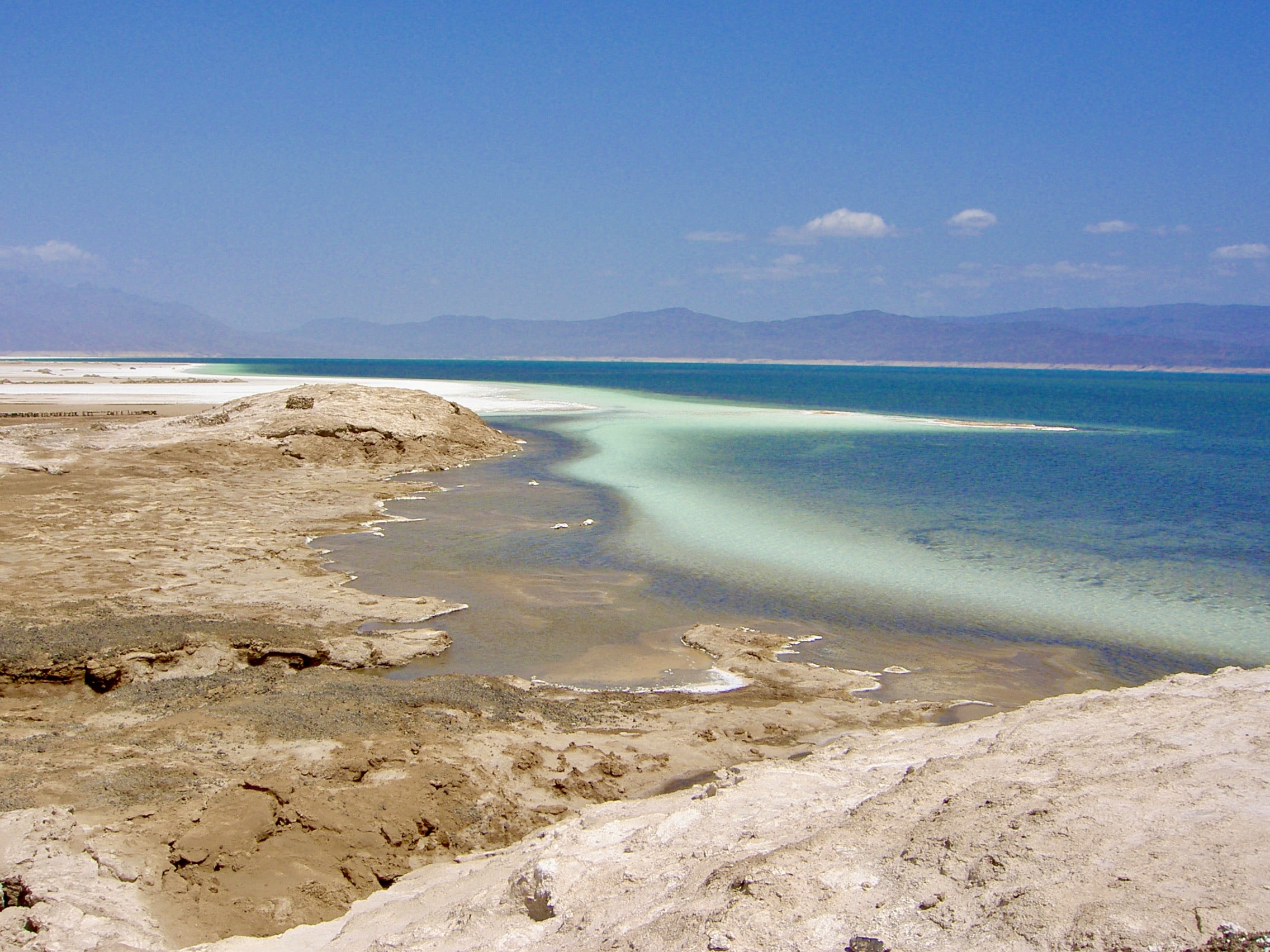


Day 3
Day Trip to Bankoualeh
After breakfast, visit the beautiful oasis of Bankoualeh, complete with waterfalls and flowers. Bankoualeh is situated in a valley at the foot of the Forêt du Day, a millennia-old forest that has been designated as a National Park. The area is famous for its promenade orchards, the elusive Black Panther, and the Francolin of Djibouti, a bird indigenous to the region. Continue on to Ardo Village in the afternoon to view the local artists before returning to the hotel.
Day 4
Explore the South
This morning, go to the southern section of Djibouti, which includes Arta Village, Grand and Petit Bara, Dikhil, and Ali Sabieh- the country’s desert territory. Arta is the only village in the south where the climate is cool and good for agriculture. It was created in 1925 by a French Army General and currently houses a few French military installations. Continue on to the Grand and Petit Bara deserts. Continue to Ali Sabieh for sightseeing before returning to the hotel in the afternoon.




Day 5
Off to Tadjourah
After breakfast, go to Tadjourah, the birthplace of the Republic of Djibouti. When the French first landed in Djibouti in 1864, they traveled to Tadjourah to negotiate for a piece of territory in exchange for a protectorate contract. Continue to Sable Blanc Beach in the afternoon for swimming and one of the greatest snorkeling places. This region features stunning reefs teeming with colorful fish and is an excellent fishing location.
Day 6
To the Islands
The Red Sea is a diver’s dream, with vibrant reefs, abundant fish, stunning shipwrecks, dolphins, and even whale sharks. Dolphin Excursions Djibouti is ideal for all levels of divers, from beginners to experts. For almost 20 years, they have provided liveaboards, PADI-certified diving training, and excursions.
The Djibouti crack in Ghoubet al Kharab Bay is an extremely excellent diving spot, with a profusion of life. Snorkelers, rejoice: you, too, may swim with whale sharks and dolphins in Djibouti.
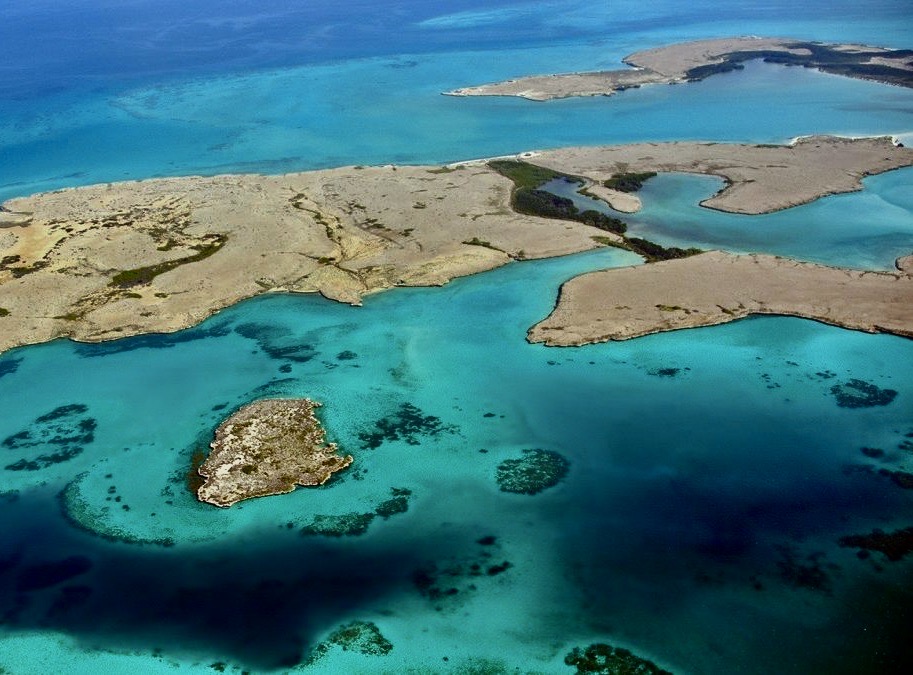
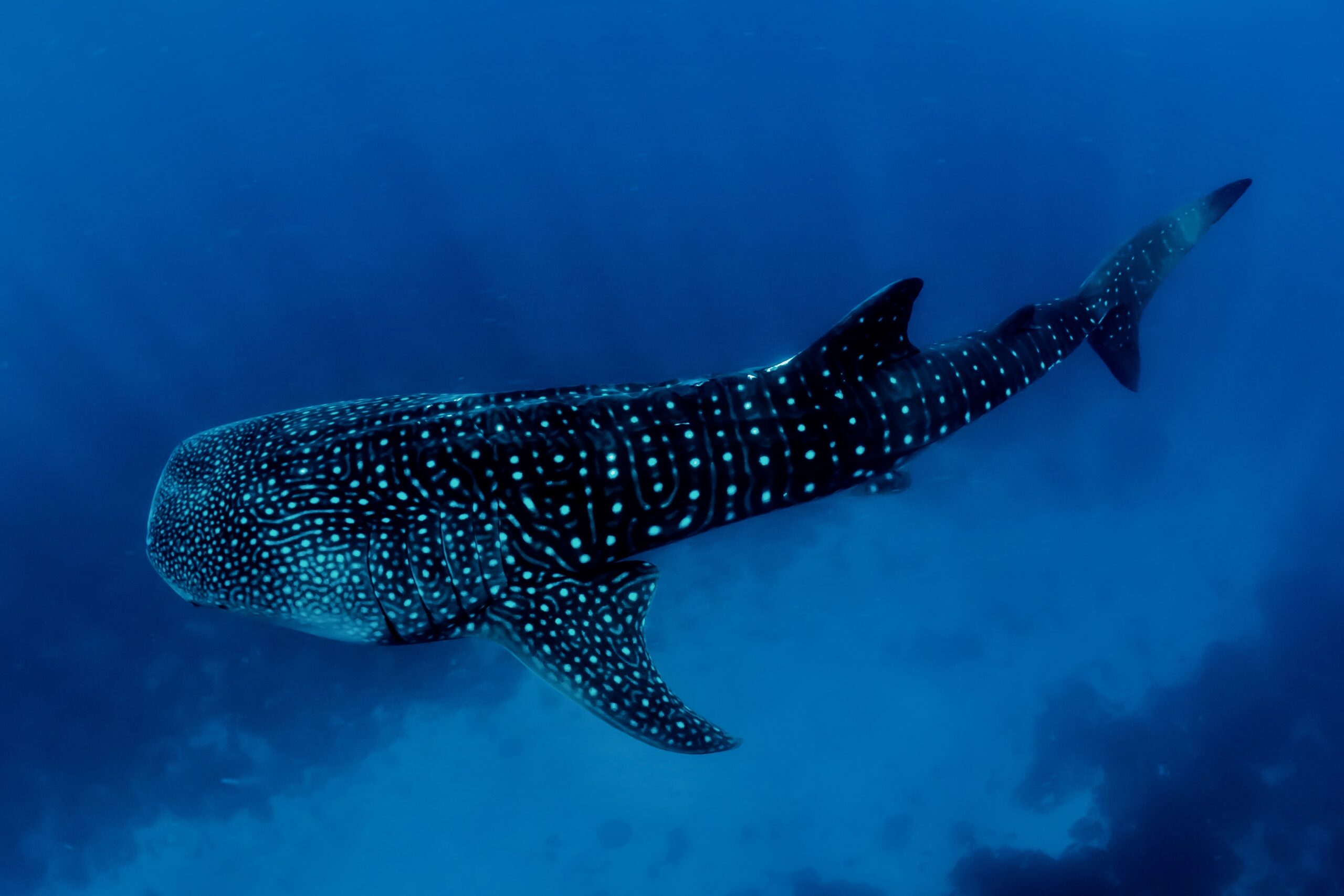

Day 7
Departure or More?
If you can add one more day, camp at Lake Abbé, a volcanic wonderland deep in the Danakil desert, is perhaps the greatest thing to do in Djibouti.
It’s full with volcanic furnaces and mind-boggling formations, and there are a number of well-managed campsites ranging from modest to opulent.
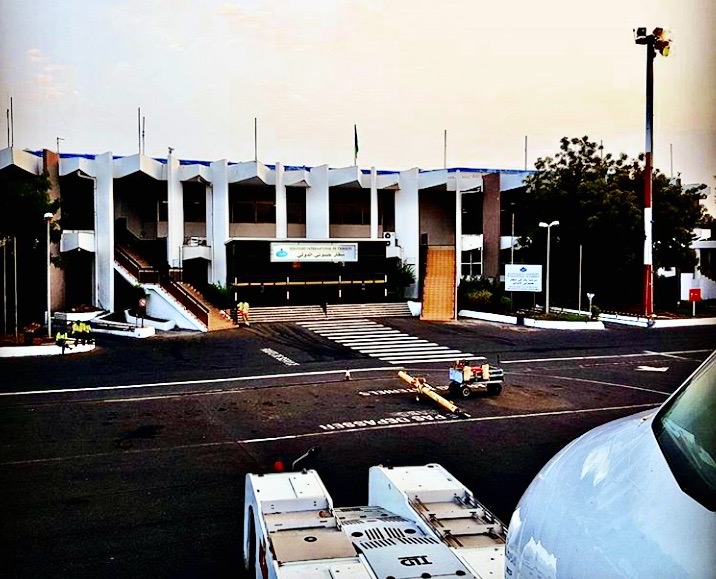
A day trip is doable, but the drive is 6-7 hours long and takes a 4×4 and some local expertise to get there. It is entirely up to you whether or not you choose to go on such an adventure.
If not, then today after breakfast head to the airport for your departure flight.
The Most Popular Food in Djibouti
Djibouti’s cuisine has been greatly influenced by its neighbors Ethiopia, Somalia, and Yemen, as well as its past occupant France and, to a lesser extent, India. As a stop on the historic Spice Road that led to Timbuktu, the nation features a variety of foods that are as distinct as its heritage.
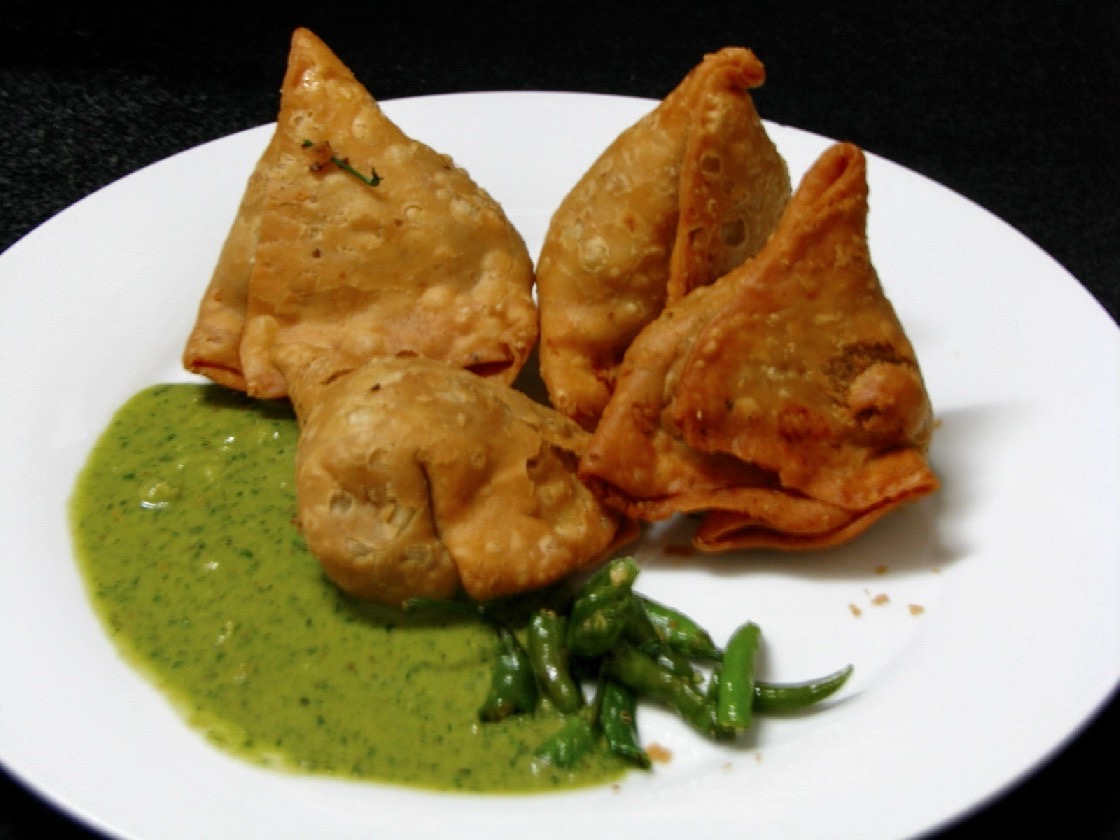
Sambuusa
Sambuussa, often known as samosa, is an excellent appetizer to begin your dinner. Treat yourself to these little crispy fried pastries filled with meat, onions, and veggies.

Mukbaza
Mukbaza, which is commonly used to refer to Yemen’s traditional fish lunch and its associated side dishes, is really a type of folded bread that is baked, sliced into pieces, and combined with honey and banana, or dates. It’s the perfect dip for Yemeni fish, usually roasted over charcoal, served as a thick purée with some almonds.

Sabaayad
Sabayaad, like Moroccan msemen, is formed of a dough of flour, water, and salt and usually cooked in the shape of gently fried squares. Djiboutians also prepare fadira, a kind of sabayaad stuffed with onion and pork or chicken. It’s great for breakfast with honey, dinner to soak up the thick spicy fuul (beans), or lunch with a tuna salad, exactly like the Djiboutians!

Fah-fah
Although Djibouti’s coastline position is often desired by neighbor Ethiopia, Djiboutians are traditionally nomadic and pastoral people, and hence prefer camel, goat, and lamb meat over shellfish and fish. If you’re not a vegetarian, you must have fah-fah, a traditional Djiboutian stew cooked with goat meat, vegetables, and chilies that may also be made with camel or lamb meat. To soak up the stew sauce, this meal is typically served with canjeero, a sponge-like bread.
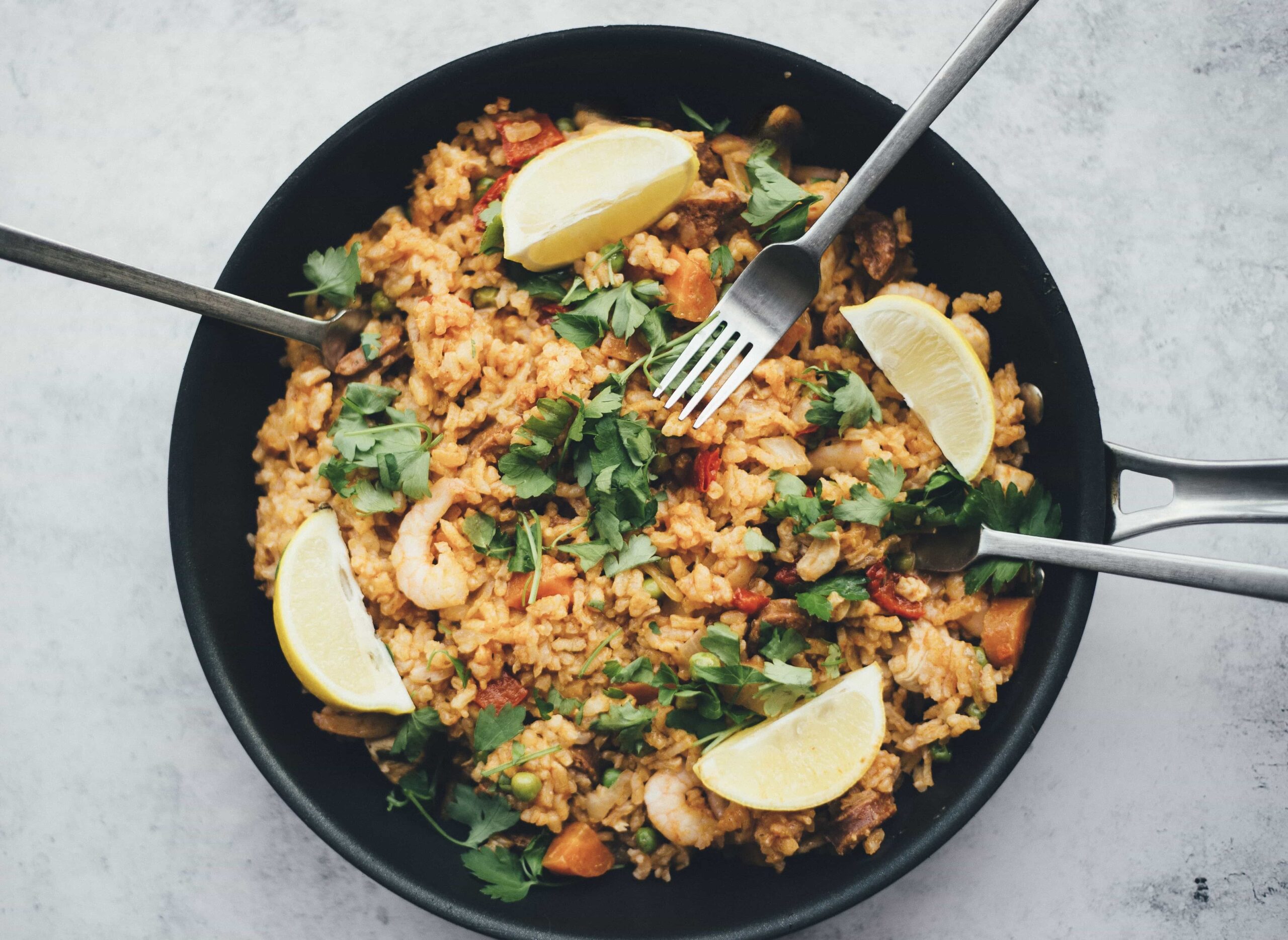
Skoudehkaris
Skudahkharis, a Djiboutian lamb stew is undeniably Djibouti’s national dish. It is typically served at the Islamic holiday of Eid al-Adha and is cooked with rice, lamb, and ayurvedic spices like as cardamom. It also goes nicely with chicken, meat, and fish. It can also be served on top of laxoox, although platters of brilliantly colored rice with grilled chicken and a buttery sauce called niter kibbeh are also prevalent.
What's the Travel Budget for Djibouti?
Flights
- Flights start at roughly $148 from nearby countries. Tickets however on average cost around $470 and can cost way more depending on which class and from which country you depart from.
Accommodation
- Nomad Backpacking style travelers can expect to spend around $270 for a week
- Budget travelers can expect to spend around $420 for a week
- Mid-range travelers can expect to spend around $650 for a week
- Luxury travelers can expect to spend around $1,920 for a week
Food Budget (Three meals and drinks)
- Nomad Backpacking style travelers can expect to spend around $20 per person per day
- Budget travelers can expect to pay around $30 per person per day
- Mid-range travelers on average would cost $35 to $55 per person per day
- Luxury travelers can expect to pay around $60 to $120 per person per day
Overall Budget Styles (Not including Flights, Tours, Transportation, or Car Rental)
- Nomad Backpacking style travelers can expect to spend roughly $450 for a week
- Budget travelers can expect to spend close to $670 for one person for a week
- Mid-range travelers can expect to spend approximately $1,110 for one person for a week
- Luxury travelers can expect to spend around $2,850 for one person for a week
Flights
- Flights start at roughly $18 from nearby countries. Tickets however on average cost around $270 and can cost way more depending on which class and from which country you depart from.
Accommodation
- Nomad Backpacking style travelers can expect to spend around $250 for a week
- Budget travelers can expect to spend around $370 for a week
- Mid-range travelers can expect to spend around $630 for a week
- Luxury travelers can expect to spend around $1,120 for a week
Food Budget (Three meals and drinks)
- Nomad Backpacking style travelers can expect to spend around $12 per person per day
- Budget travelers can expect to pay around $20 per person per day
- Mid-range travelers on average would cost $25 to $35 per person per day
- Luxury travelers can expect to pay around $40 to $70 per person per day
Overall Budget Styles (Not including Flights, Tours, Transportation, or Car Rental)
- Nomad Backpacking style travelers can expect to spend roughly $360 for a week
- Budget travelers can expect to spend close to $550 for one person for a week
- Mid-range travelers can expect to spend approximately $910 for one person for a week
- Luxury travelers can expect to spend around $1,650 for one person for a week
Flights
- Flights start at roughly $18 from nearby countries. Tickets however on average cost around $270 and can cost way more depending on which class and from which country you depart from.
Accommodation
- Nomad Backpacking style travelers can expect to spend around $250 for a week
- Budget travelers can expect to spend around $370 for a week
- Mid-range travelers can expect to spend around $630 for a week
- Luxury travelers can expect to spend around $1,120 for a week
Food Budget (Three meals and drinks)
- Nomad Backpacking style travelers can expect to spend around $12 per person per day
- Budget travelers can expect to pay around $20 per person per day
- Mid-range travelers on average would cost $25 to $35 per person per day
- Luxury travelers can expect to pay around $40 to $70 per person per day
Overall Budget Styles (Not including Flights, Tours, Transportation, or Car Rental)
- Nomad Backpacking style travelers can expect to spend roughly $360 for a week
- Budget travelers can expect to spend close to $550 for one person for a week
- Mid-range travelers can expect to spend approximately $910 for one person for a week
- Luxury travelers can expect to spend around $1,650 for one person for a week
Flights
- Flights start at roughly $18 from nearby countries. Tickets however on average cost around $270 and can cost way more depending on which class and from which country you depart from.
Accommodation
- Nomad Backpacking style travelers can expect to spend around $250 for a week
- Budget travelers can expect to spend around $370 for a week
- Mid-range travelers can expect to spend around $630 for a week
- Luxury travelers can expect to spend around $1,120 for a week
Food Budget (Three meals and drinks)
- Nomad Backpacking style travelers can expect to spend around $12 per person per day
- Budget travelers can expect to pay around $20 per person per day
- Mid-range travelers on average would cost $25 to $35 per person per day
- Luxury travelers can expect to pay around $40 to $70 per person per day
Overall Budget Styles (Not including Flights, Tours, Transportation, or Car Rental)
- Nomad Backpacking style travelers can expect to spend roughly $360 for a week
- Budget travelers can expect to spend close to $550 for one person for a week
- Mid-range travelers can expect to spend approximately $910 for one person for a week
- Luxury travelers can expect to spend around $1,650 for one person for a week
If you want to know what to pack, read this list below:
- This is a conservative African country with warm to hot weather that tends to be scorching hot in the summer, and warm in the winter, dress accordingly
- Raincoat or Light Waterproof Jacket
- Hiking Boots or Sturdy Sneakers (Shoes You Don’t Mind Getting Wet)
- Sunscreen
- Insect Protection – Repellent and Clothing
- Sunglasses and Sun Hat
- Water Shoes
- Beach Towels/Sarong
- Dry Bag
- Money Belt or Cross Bag
- Portable Medical Kit
- Flashlight or Headlamp
- Copies of your passport.
- Get all the needed vaccinations before traveling
- A power bank is a must in any travel.
- Always have some cash with you just in case there are no ATMs and if you are dealing with a business that solely accepts cash
- Get yourself an adapter for your gadgets
- 1 toothbrush
- 1 tube of toothpaste
- 1 razor
- 1 package of dental floss
- 1 small bottle of shampoo
- 1 small bottle of shower gel
- 1 towel
- Deodorant
- Band-Aids
- Hydrocortisone cream
- Antibacterial cream
- Earplugs
- Tylenol
- Hand sanitizer (germs = sick = bad holiday)
- A key or combination lock
- Zip-lock bags
- Plastic bags (great for laundry)
- Universal charger/adaptor
- LifeStraw (A water bottle with a purifier)
- 1 dry shampoo spray & talc powder
- 1 hairbrush
- Makeup you use
- Hairbands & hair clips
- Feminine hygiene products
Clothing For Boys
- 1 pair of jeans or khaki pants
- 1 pair of shorts
- 1 bathing suit
- 5 T-shirts
- 1 long-sleeved T-shirt
- 1 pair of flip-flops
- 1 pair of sneakers
- 6 pairs of socks
- 5 pairs of boxer shorts
Clothing For Girls
- 1 swimsuit
- 1 sarong
- 1 pair of stretchy jeans
- 1 pair of leggings
- 2-3 long-sleeve tops
- 2-3 T-shirts
- 3-4 spaghetti tops
- 1 light cardigan
Want to plan your own trip, here are some of the best resources that can help you
- Skyscanner – They search small websites and budget airlines that larger search sites tend to miss. They are hands down the number one place to start.
- Momondo – This is another favorite flight search engine because they search such a wide variety of sites and airlines. Always check here too.
- Booking.com – The best all-around booking site that constantly provides the most affordable and lowest rates. They have the widest selection of budget accommodation.
- Couchsurfing – This website allows you to stay on people’s couches or spare rooms for free. It’s a great way to save money while meeting locals who can tell you the ins and outs of their city. The site also lists events you can attend to meet people (even if you’re not staying with someone).
- Intrepid Travel – If you want to do group tours, go with Intrepid. They offer good small group tours that use local operators and leave a small environmental footprint.
- Grassroots Volunteering – For volunteering, Grassroots Volunteering compiles a list of good local volunteer organizations that keep the money within the community.
- Get Your Guide – Get Your Guide is a huge online marketplace for tours and excursions. They have tons of tour options available in cities all around the world, including everything from cooking classes, walking tours, street art lessons, and more! It has the world’s largest collection of things to do with more than 30,000 activities in 7500 destinations.
- SafetyWing – Safety Wing offers convenient and affordable plans tailored to digital nomads and long-term travelers. They have cheap monthly plans, great customer service, and an easy-to-use claims process that makes it perfect for those on the road.
- Trip Advisor: Check the reviews and then book your accommodation. TripAdvisor is where you go when you want to compare prices with multiple accommodation providers.
- VRBO: is the main search engine to use when you are looking for a home or apartment rental. It can sometimes be cheaper than hotels and it is the best way to stay in areas that offer a more local feel.
- Hostelworld: With one of the largest databases of hostels in the world, Hostelworld is the go-to site when you are looking for budget accommodation.
- Rome 2 Rio: If you want to see how to get somewhere by plane, train, bus, ferry, or car Rome2Rio lays it all out for you as well as related costs.
- World Nomads Insurance: When traveling you should always have travel insurance. We have found the best bang for your buck is by far World Nomads.
Final Thoughts on Djibouti
With diverse relics of its past and rich heritage, breathtaking and bizarre landmarks – great hospitality, exciting festivals, and picture-perfect national parks, beaches, and antique towns, Djibouti has a refined and deep heritage that can be seen across the country dating back to 3 BC. A fantastic option for anyone seeking one of the best African holiday locations nestled in the horn of Africa. Djibouti is breathtakingly beautiful, with magnificent national treasures, flora and Wildlife, and spectacular scenery. Would you visit Djibouti?
Have you ever been to Djibouti? Please share your thoughts and experiences in the comments area below.